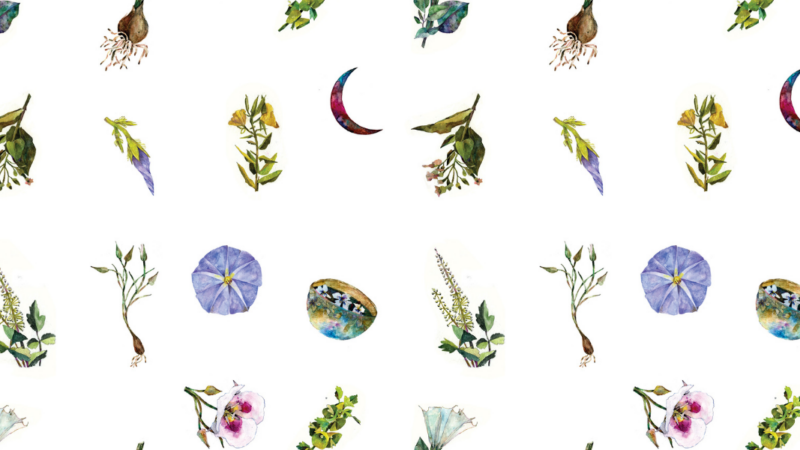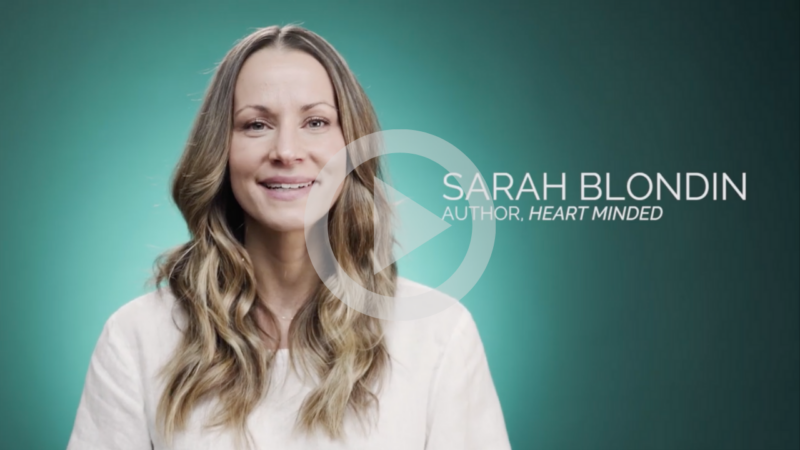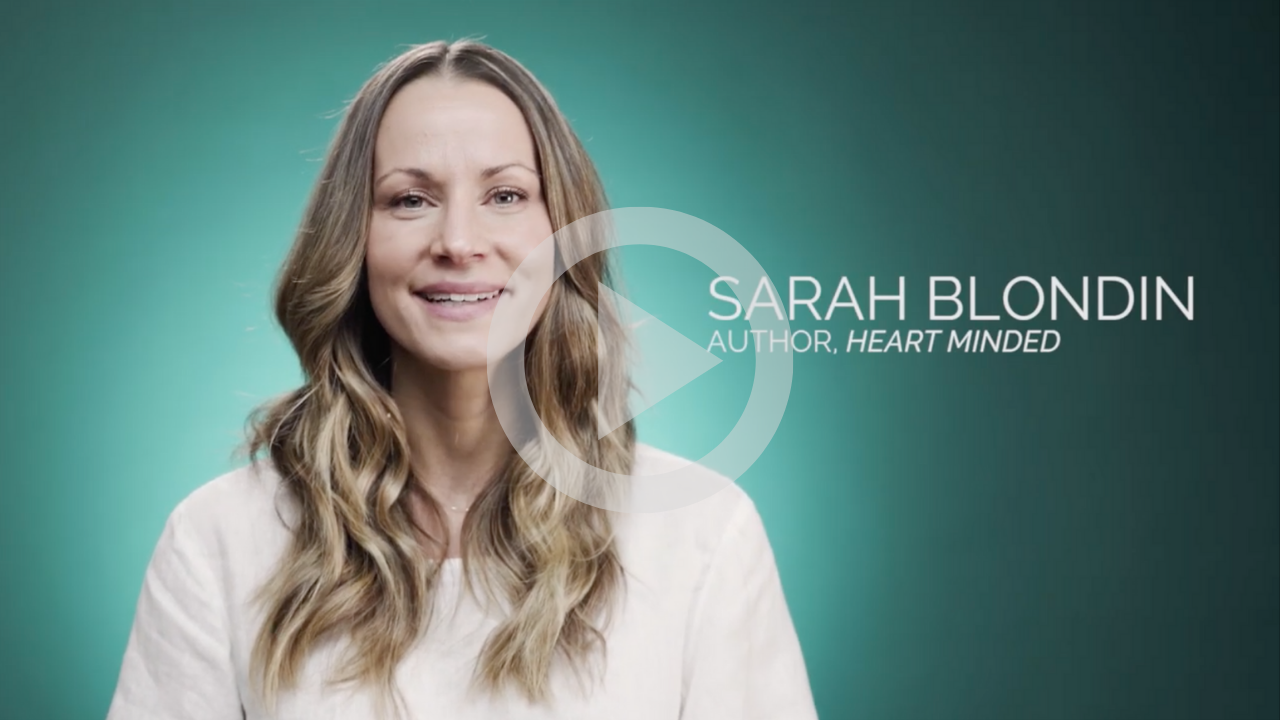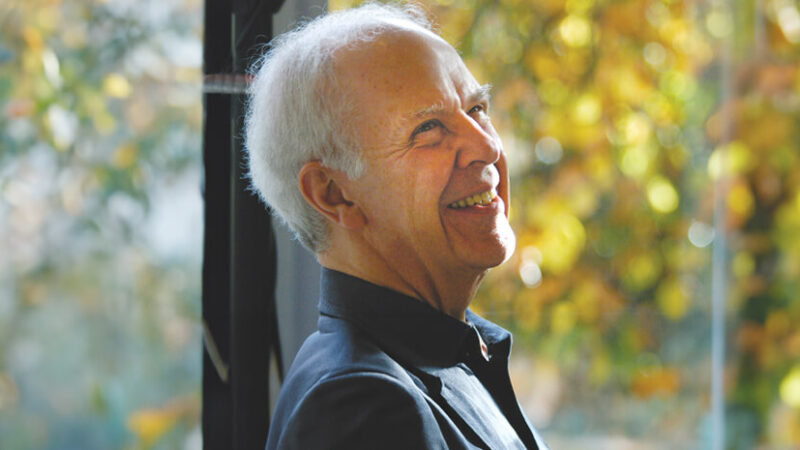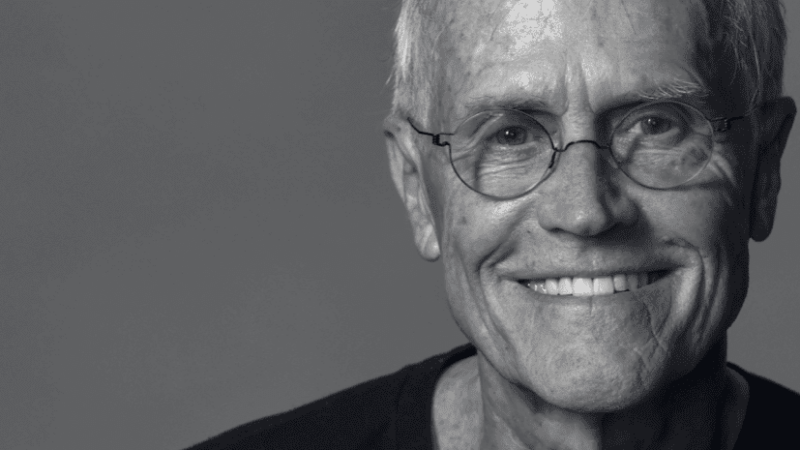-
E93: The Practice of Unconditional Openness
Michael Singer — July 9, 2025
When you’re open, life feels beautiful and joyful; when you're closed, everything seems wrong....
-
Seane Corn and Lama Rod Owens: Steady Breath, Steady Heart
Lama Rod Owens, Seane Corn — July 8, 2025
How are you doing these days? Exhausted? Heartbroken? Outraged? All of the above? In this era of...
-
Honey Tasting Meditation: Build Your Relationship with Sweetness
There is a saying that goes “hurt people hurt people.” I believe this to be true. We have been...
Written by:
Amy Burtaine, Michelle Cassandra Johnson
-
Many Voices, One Journey
The Sounds True Blog
Insights, reflections, and practices from Sounds True teachers, authors, staff, and more. Have a look—to find some inspiration and wisdom for uplifting your day.
Standing Together, and Stepping Up
Written By:
Tami Simon -
The Michael Singer Podcast
Your Highest Intention: Self-Realization
Michael Singer discusses intention—"perhaps the deepest thing we can talk about"—and the path to self-realization.
This Week:
Seane Corn and Lama Rod Owens: Steady Breath, Steady Heart -
Many Voices, One Journey
The Sounds True Blog
Insights, reflections, and practices from Sounds True teachers, authors, staff, and more. Have a look—to find some inspiration and wisdom for uplifting your day.
Take Your Inner Child on Playdates
Written By:
Megan Sherer
600 Podcasts and Counting...
Subscribe to Insights at the Edge to hear all of Tami's interviews (transcripts available, too!), featuring Eckhart Tolle, Caroline Myss, Tara Brach, Jack Kornfield, Adyashanti, and many more.
Most Recent
Valarie Kaur: Activating Revolutionary Love
Valarie Kaur is a seasoned civil rights activist and celebrated prophetic voice at the forefront of progressive change. She’s the founder of the Revolutionary Love Project and author of the book See No Stranger: A Memoir and Manifesto of Revolutionary Love. With Sounds True, Valarie has created The People’s Inauguration—a 10-day online program to help us reckon with all we have lost and point us toward a vision of the society we can build together, grounded in love. In this episode of Insights at the Edge, Tami Simon and Valarie discuss “revolutionary love” as a guiding ethic for our times. They explore what it is to extend love to all people without limit and how opening our hearts in this way is both an ancient and radical act. Valarie also talks about “the heart and the fist,” and why both are necessary in order to create the systemic, cultural, and environmental transformations our world needs. Finally, Valarie shares what we can learn from our rage and grief, as well as the importance of connecting with our joy and our ancestors as we keep showing up for the labors of love before us.
The Remedy We Are Excited To Try in the New Year: Flow...
What are flower essences?
The goals of flower essence therapy include: ease in accessing higher vibratory states like joy and gratitude; enhanced mind-body-spirit balance, presence, acceptance of emotions and integration of difficult vibratory states; encouraging flow states like creativity; manifesting; supporting balance; expanding awareness of self and the Universe, ancestral connection and healing; and helping us to be of greater service to ourselves, others, and the Earth.
Flower essences work by way of the following:
- synchronicities—helping us connect seemingly unrelated or previously unseen opportunities or happenings
- indirect occurrences—positively affecting different environments and interpersonal dynamics
- insights—supporting mental, emotional, physical, and/or astral awakening; new ideas, solutions, or information may present
- physical changes—bringing up new sensations, shifts in organ/system functioning or in symptoms
- emotional responses—bringing up new feelings or memories; stabilizing or releasing them
- expression—inspiring artistic, verbal, and kinesthetic expression
- dreamtime—bringing about new or recurring dreams, insights, and subconscious resolution
- invoking intention—the more time and space you can offer, the more likely you’ll be able to feel flower essences. For example, taking them with a light meditation, a visualization, while doing yoga or some other kind of bodywork or prayer
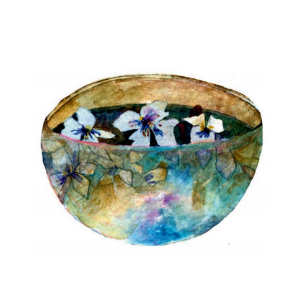
How to Select a Flower Essence
Flower essences can be purchased from a quality producer, or you can make your own. Here, I will discuss how to select and apply ready-made flower essence remedies. You can learn how to wildcraft your own flower essences with me in this video.
When you’re starting out with flower essences, it can be overwhelming—so many producers and so many essences! I like to encourage people to remember that it’s your relationship with the plant that is the most important thing in selection. Your relationship with the remedy is the co-creation with that plant. The more you work with flowers, the more you will be able to feel and trust this part of the process.
The following are some ways to begin exploring flower essences:
- Depending on what issue(s) you’d like to address, begin by taking one to three essences that resonate with you. Many producers offer sets of remedies that have a particular focus. You may want to purchase a set to experiment with, such as the FES’s Range of Light, Delta Gardens’ Protection Set, Alaskan Essences, or the Bach Essences.
- Consider flower essences that invite presence, relaxation, protection, and grounding.
- If you want to study the essences more carefully, consider making flashcards or purchasing the flower cards (Alaskan Essences, FES, and Bach make sets).
- If you’re curious to learn more about how a plant might connect with your ancestry, consider doing some research on how it was used historically.
- Perhaps there’s a flower you’re curious about, or have seen in nature. Ask this plant if it would like to work with you.
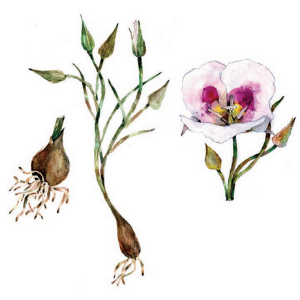
Here are five basic ways to select a flower essence:
- Intuitively: A flower essence might come to you by way of revealing itself in nature, or appearing in a dream.
- By dowsing: Using a tool of resonance, such a pendulum, to test for essences.
- Through muscle testing: A simple way to muscle test is to make a ring with the index finger and thumb of your nondominant hand. If you would like to test for a yes for an essence, say the name of the plant and flick the circle with your dominant hand. If the circle holds, that’s a yes. If it breaks open, that is a no.
- By consulting reference literature: Books, repertories, or flower affirmation cards.
- Through blind testing: By drawing a card or randomly selecting an essence from a set. This method works well with children.
Any of these methods can be integrated into your ritual. Before making remedies for other people, it’s a good idea to spend some time with the flower essences yourself. The flowers will have much to share with you. Also, the more experience you have with the essences yourself, the better you will understand how the essences will work for others.
This is an excerpt from The Bloom Book: A Flower Essence Guide to Cosmic Balance by Heidi Smith.
 Heidi Smith, MA, RH (AHG), is a psychosomatic therapist, registered herbalist, and flower essence practitioner. Within her private practice, Moon & Bloom, Heidi works collaboratively with her clients to empower greater balance, actualization, and soul-level healing within themselves. She is passionate about engaging both the spiritual and scientific dimensions of the plant kingdom, and sees plant medicine and ritual as radical ways to promote individual, collective, and planetary healing. She lives in Brooklyn, New York, with her partner and two cats. For more, visit moonandbloom.com.
Heidi Smith, MA, RH (AHG), is a psychosomatic therapist, registered herbalist, and flower essence practitioner. Within her private practice, Moon & Bloom, Heidi works collaboratively with her clients to empower greater balance, actualization, and soul-level healing within themselves. She is passionate about engaging both the spiritual and scientific dimensions of the plant kingdom, and sees plant medicine and ritual as radical ways to promote individual, collective, and planetary healing. She lives in Brooklyn, New York, with her partner and two cats. For more, visit moonandbloom.com.
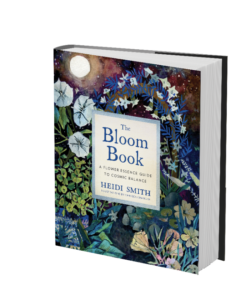
Learn More
Sounds True | Amazon | Barnes & Noble | Bookshop
Building the Bridge Between the Heart and the Mind
How can we drop what we are holding on to, if we do not first look for the hand that is grasping so tightly?
Have you ever noticed that you have two distinctly different personae and tend to vacillate between them?
One is very rigid and concerned with the outcome of everything. It worries and frets, its gaze mostly downcast. It doesn’t rest easily, even keeps you up at night sometimes. It acts almost like a dog chasing its tail. It circles obsessively over every detail and unknowable outcome, chasing the same things in a constant repeated pattern. It is cunning, convincing, and tyrannical in nature. It is feverish and ungrounded. Changing, morphing, and flopping from one story or idea to the next. This is your unharnessed mind. The persona you take on when your mind is not connected to the compass of the heart.
For most of us, that’s the dominant persona. But the other aspect of you, as if by some divine intervention, will from time to time slip past the censor of the mind and cheerfully take over your being with its boundless and uninhibited spirit. This personality doesn’t worry. Its face is often lifted, looking in wonder at the shifting sky and swollen moon. Lips curled into a slight smile. It is fluid and flowing, as if it’s on a river of unending joy. It acts like water and reflects light. You feel buoyant. This is your heart-centered self, your true self.
Because most of us moved into our mind long, long ago as a way of protecting our hearts, we now live most of our time in that rigid, concerned first persona. Without even realizing it, we allow our minds to stand between us and our true nature. We have no (conscious) idea how much our minds are acting as a defensive block against our soft and tender core, constantly at work trying to find ways to keep us from feeling, from hurt, from heartache. The price we are paying, however, is that we are also kept from accessing source.
In order to be heart minded, we need to bring the heart and mind into harmony and partnership with one another. For this to happen, we have to train the mind not to fear and close off from the heart, and instead, serve our heart and implement its wishes. In order to do this, we have to undo our mind’s association of feelings of the heart with hurt and harm. In situations that would ordinarily have us retreat or retaliate, we need to remain conscious of what’s happening and choose to soften and lean into our heart’s center. Each time we practice this softening, we send a new message to the mind that signals that we are safe, willing, and wanting to live in this more open, more sensitive way.
Over time, if we are resolute in our intention to step into our heart, our mind will become less rigid in its defenses against feelings and tenderness, and gradually we will become more heart centered.
Remember, we are not trying to pit the heart and mind against one another; we are trying to marry their aptitudes.
Let’s say a wave of anxiety washes through you. You notice your mind begin to race and attach to fearful thoughts. The anxiety then morphs into panic, which courses through you and makes you feel like jumping out of your skin. You begin reaching for an escape, resorting to some form of substance or distraction that can act as a numbing balm.
What just happened? Because you avoided your distress, you are only slightly comforted. A part of you remains braced under the distraction, in fear of the next time this could happen. Your mind’s instinct to protect and defend has been confirmed.
Your heart is neglected and still aching.
But let’s say a wave of anxiety washes through you and instead of looking for an escape route, you go to a quiet room to confront the feeling. You let go of the notion that something is wrong and respond as if something very right is taking place. You know some part of you is calling out for your love and attention.
Let’s say you close your eyes and open your heart to the bigness of the feeling. You create space around it simply by looking without resistance at its contours. You know the only antidote is self-love and hospitality. The mind stops racing away from the distress, which makes room for the heart to begin healing and soothing the body. Your mind learns a new route. You are gifted with courage and resilience.
The only difference between these scenarios was one simple choice: to remain a bystander as the mind continues to ignore the call of the body and heart or to act in ways that support leading from the heart, so the mind can follow.
The two can be wonderful allies if we let them.
As we become heart minded, we begin transforming our human experience from something out of our hands to something very much in them. We begin to cultivate joy instead of haphazardly stumbling upon it when we are willing.
Each moment, our bodies are counseling us to make choices that bring us closer to love. The wisdom of the heart and body is there for us, always, if we listen and let it lead.
For a guided practice in learning to stay in our hearts during difficult times, follow along with Sarah in this video.
This is an adapted excerpt from Heart Minded: How to Hold Yourself and Others in Love by Sarah Blondin.
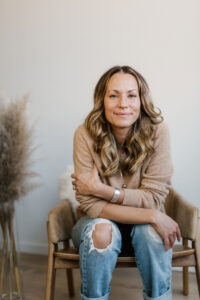
Sarah Blondin is an internationally beloved spiritual teacher. Her guided meditations on the app InsightTimer have received nearly 10 million plays. She hosts the popular podcast Live Awake, as well as the online course Coming Home to Yourself. Her work has been translated into many languages and is in use in prison, recovery, and wellness programs. For more, visit sarahblondin.com.
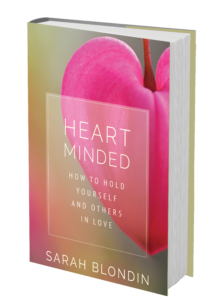
Learn More
Customer Favorites
Sera Beak: Bringing Your Soul Home
Sera Beak is a scholar of comparative religions who has conferred with shamans, monks, and mystics the world over. She is the author of The Red Book: A Deliciously Unorthodox Approach to Igniting Your Divine Spark and Red Hot and Holy: A Heretic’s Love Story. With Sounds True, she has most recently published Redvelations: A Soul’s Journey to Becoming Human. In this episode of Insights at the Edge, Tami Simon speaks with Sera about the fragmentation of the soul and the journey that Sera undertook when she realized that pieces of her own soul had gone missing. They discuss the passage of core wounds between lifetimes and Sera’s experiences of remembering and reclaiming Sarah, the forgotten daughter of Jesus and Mary Magdalene, as a lost part of her own soul. Sera describes how she reckoned with her experiences—first wanting to not share them with anyone else, and then growing into the realization that to not do so would be to abandon a key part of her essential self. Finally, Tami and Sera talk about how to embody true, divine love and how this eternal love transmits through “the organic lineage” of all life. (61 minutes)
Parker Palmer: Welcome to the Human Race
Why is depression so hard for us to bring out into the open? Why does it stir up so much shame and fear? How can we shift our view of depression from a problem that needs to be fixed to a gateway to empathy, courage, wholeness, and belonging? These are the profound questions explored by Tami Simon and Parker Palmer in this incisive, insightful podcast.
Join Tami and Parker as they discuss: Being present for those in depression; suffering and empathy; courage and resilience; integrating (rather than disowning) experiences of depression; showing up in the world as who you really are; the vast intelligence of life—and the weaving of shadow and light; embracing paradox; Parker’s metaphor of “living at altitude” (or the level of ego) vs. living from one’s soul; depression as a befriending, grounding energy; how Abraham Lincoln’s depression served as a force of reconciliation for a nation at war with itself; learning to be “hallowed by our diminishments”; and more.
Calling Team Earth: Ending the Climate Crisis in One G...
Paul Hawken is a world-renowned environmentalist, activist, and author. His works include Blessed Unrest, Drawdown, and Sustainable Revolution. In this episode of Insights at the Edge, Tami Simon speaks with Paul about the call to action in his newest book, Regeneration: Ending the Climate Crisis in One Generation. Paul and Tami discuss the accelerating effects of climate change and how global society might respond. Paul comments on the lack of public engagement with the situation, emphasizing that old and entrenched human behavioral patterns won’t solve the problem. Tami and Paul talk about the nature of social change, resources for everyday climate action, and the fascinating climate-shifting possibilities of the Azolla fern. Finally, they speak on the importance of staying active and joyous even when the scale of the crisis feels overwhelming.

